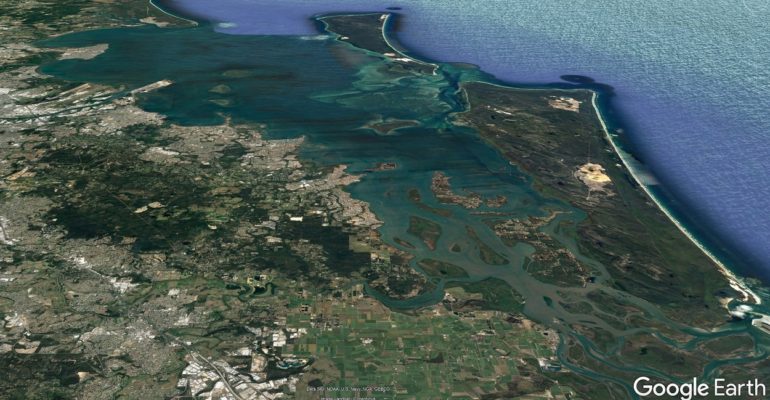
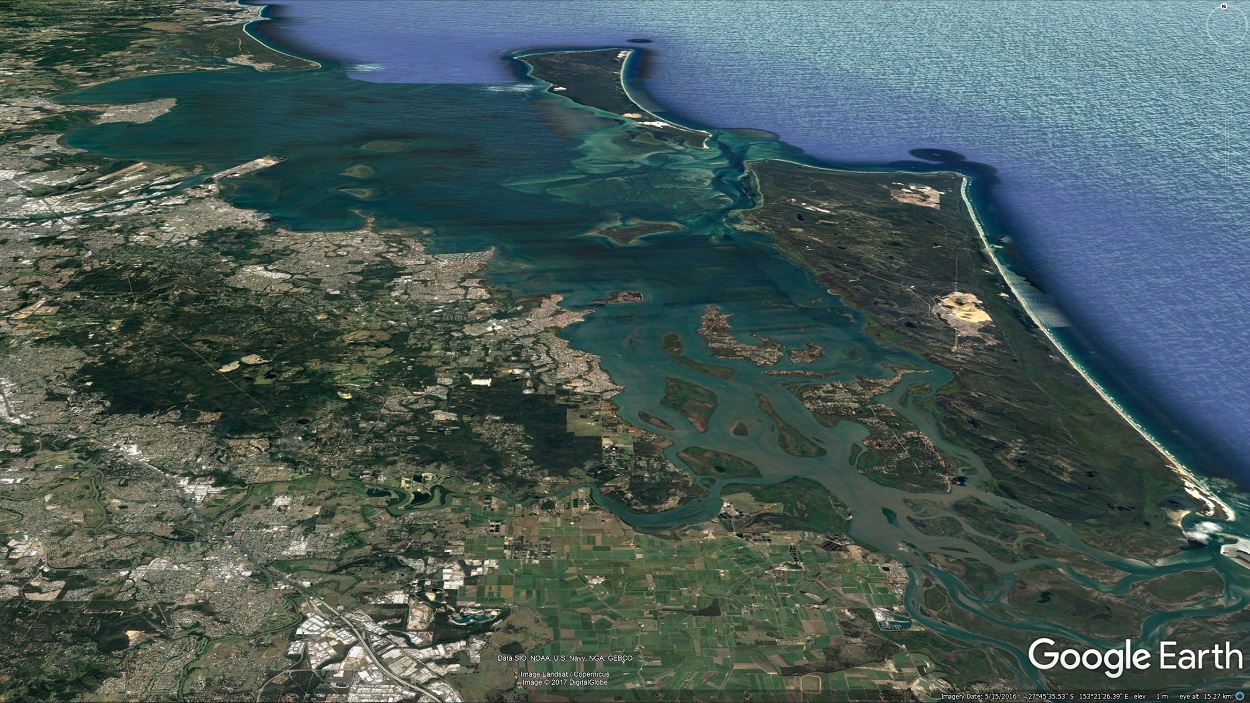
World Heritage protection of Moreton Bay is proposed by the Quandamooka People
Moreton Bay’s traditional owners, the Quandamooka People, believe the Bay region is of such outstanding universal natural and cultural value they want it listed as a World Heritage Site.
What is World Heritage
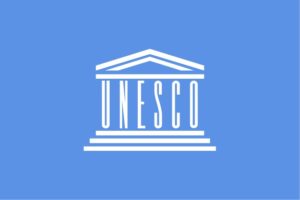
UNESCO manages the World Heritage listing process
A World Heritage Site is a place listed by the United Nations Educational, Scientific and Cultural Organisation (UNESCO) because it has special cultural or physical significance. The concept arises out of the World Heritage Convention, which aims to promote cooperation among nations to protect heritage from around the world that is of such outstanding universal value that its conservation is important for current and future generations.
The Quandamooka People believe large parts of Moreton Bay, including the adjacent sand islands of Minjerribah-North Stradbroke Island and Mulgumpin-Moreton Island, constitute such a site. They have asked the Queensland Government to start the listing process and to have the region recognised as a mixed cultural-natural site.
The objective is to gain recognition of Quandamooka culture and to protect the outstanding aspects of Quandamooka culture and country. The nomination enjoys strong community support, including from local, state, national and international conservation groups, Sunfish and the North Stradbroke Island Historical Museum.
Work on the Quandamooka nomination was conducted by one of the world’s most experienced environment and heritage advisers, Peter Hitchcock. Griffith University’s Professor of Environmental and Landscape Planning, Darryl Low Choy, and archeologist, Dr Richard Robins, also provided vital support.
What areas are intended to be listed?
The proposed Quandamooka listing covers various marine and land protected areas formed by North Stradbroke-Minjerribah and
Mulgumpin-Moreton Island (the second and third largest sand islands in the world), which are part of Queensland’s Great Sandy region. (See map.)
Fraser Island, the world’s largest sand island, is located in the northern part of the Great Sandy region and is already World Heritage listed.
Minjerribah-North Stradbroke Island and Mulgumpin-Moreton Island retain much of their pre-European settlement condition, including both native vegetation and wildlife and many Aboriginal cultural sites, which are part of the Quandamooka People’s heritage.
What makes Moreton Bay outstanding?
The Quandamooka People have specialist advice that supports what we have known for more than 20,000 years: The two sand islands are outstanding natural phenomena.
However, what really makes Moreton Bay a place of Outstanding Universal Value (OUV) are the marine and wetland habitats within the bay and adjacent sea. They have high biodiversity conservation value.
The marine areas support a rich diversity of fish, sharks, reptiles and marine mammals of international importance for conservation. The numbers are clear. They include 1154 fish species, 944 gastropod molluscs, 351 bivalve molluscs and 143 coral species of which 119 are found on Flinders Reef outside the bay. Six of the world’s seven turtles are found here.
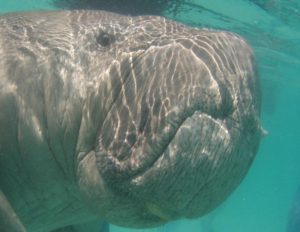
Dugong in Moreton Bay – Photo Janet Lanyon
Fourteen species of marine mammals are resident in or visitors to Moreton Bay Marine Park, comprising eight species of dolphin (two resident), five species of whale and the dugong.
Our dugongs are renowned around the world. We are one of the last great dugong areas. The area is also home to an important population of the endangered grey nurse shark.
Indigenous cultural heritage can also be found throughout the nominated area. The evidence points to at least 20,000 years of continuous occupation and land and sea use by the Quandamooka People. There are currently over 1000 known cultural heritage sites, including shell middens, stone artefact scatters, stone artefact quarries, burials, scarred trees, earthen ceremonial rings, story places, pathways, and stone fish traps. More are being found all the time.
Our ancient wetlands are unique in such a dynamic coastal environment. They are already protected and internationally acknowledged, being designated Marine Park, by the State Government, and variously recognised as Ramsar Wetlands of International Importance, Wetlands of National Importance, Fish Habitat Areas and an Important Bird Area (IBA).
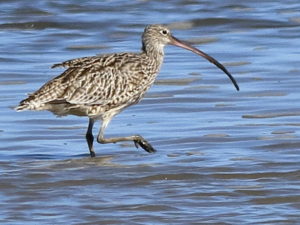
Eastern Curlew – a critically endangered migratory shorebird – Photo Chris Walker
About 50,000 migratory shorebirds, comprising the 34 species using the East Asia-Australasian Flyway, turn up at the Moreton Bay wetlands each year. Moreton Bay provides habitat for 31 migratory wader species protected by three international agreements in Japan, Korea and China.
The two sand islands contain a range of habitats including mangroves, wetlands, heathlands, freshwater lakes, rainforests, old growth forests and woodlands. They are also home to a number of rare or threatened animal and plant species.
The Bay belongs to the world!
So, it is clear this is a very special place. While it is a precious part of our beloved Queensland it also belongs to the world. That is why we believe it should be World Heritage listed.
To have such a wonderland so close to our capital city is also something we should be thankful for. World Heritage listing will be a great benefit for Brisbane and the whole south-east.
The Quandamooka People have loved and cared for this place for more than 20,000 years. With World Heritage listing we can ensure it continues to be protected and valued, not just by us, but the people of the world.
We look forward to the State Government supporting and finalising the Tentative List nomination and getting Quandamooka Country the international recognition and protection it deserves.
Cameron Costello
Chief Executive Officer
Quandamooka Yoolooburrabee Aboriginal Corporation (QYAC)
18 October 2017
Please note: Offensive or off-topic comments will be deleted. If offended by any published comment please email thereporter@redlands2030.net
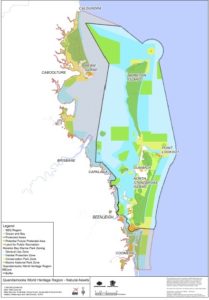
4 Comments
And what effect with this have on those CURRENT RESIDENTS who have invested their life savings in a property in the prescribed zone. Why don’t we let the traditional owners of Europe (the Gauls) decide what should be done with Europe. I fear the Quandamooka people don’t realise that the current residents really care about the bay and its future. I personally made a substantial submission to Redlands 2030 which painted a picture of a logical and eco friendly future for Macleay Island in particular. Of course I’ve had zero feedback since the submission. I respected the traditional owners of Uluru until I saw same traditional owners smashing glass bottles against the rock. For the same reason the Quandamooka people should not assume World Heritage would better custodians of Moreton Bay than the current residents. Current residents are acutely aware of the history and ecosystems involved and don’t need a lecture on same. Should current residents consider this an invasion? I look forward to any logical (rather than entirely emotional) debate on this issue.
There are 2 other World Heritage proposals relating to Fraser Island one contentious. The future of this proposal should not be contentious ,except for omissions, speculators and previous and future fire management(needs a sky crane and koala and glider protection), but will it survive a change a change of government and agency change?
As Dr Tafe infers the failure to include other RAMSAR Areas and adjoining areas like Eprapah and Toondah which both need better investment in wider and thorough environmental baseline assessments is perplexing. There may be potential or conflicting Land and Sea Claims .
Perhaps other unknown , littoral and intertidal mainland coastal cultural heritage sites exist. Another site has been bitumened over at Carbrook,next to a RAMSAR and national wetlands site.
It is pleasing to see that the CEO of the Quandamooka Yoolooburrabee Aboriginal Corporation (QYAC) recognises the importance of Moreton Bay in Queensland to the Aboriginal people who have lived in this region for over 25,000 years. There are sacred sites and middens in many places and just one of them has been dated at 25,000 years. It is also an important region for the world and therefore it has been designated for World Heritage Listing. It has unique marine and coastal species, including dugongs, three species of marine turtles, two species of dolphins, five species of migrating whales and many species of migrating shore-birds. Some of the shore-birds migrate annually from the Northern Hemisphere up beyond Japan. As a marine biologist who has studied marine life in Moreton Bay I can verify that there are still marine species to be discovered and named in the Bay. What is somewhat perplexing is that whoever drew up the boundaries of the area to be encompassed in the World Heritage Listing drew the western boundary down through the middle of the northern section of the Bay and did not even include Bribie Island, an integral part of the Moreton Bay Ecosystem. The Bay is relatively shallow and is flushed daily by tidal movements. Previous investigations have shown that acid sulphate soils exist around a number of islands like Cassim Island. There is no damage to seagrasses or the dugongs and other marine life that feed on seagrasses so long as these areas are not disturbed. If they were to be disturbed some toxic chemicals would move up into the water column. It was only a few years ago that a previous state government decided in its wisdom to dredge the harbour at Gladstone with assurances it would not have any effect on local marine life. We now know what happened. Heavy metals were stirred up from the substrate and commercial fisheries were affected to the point that some fishermen were forced to close their businesses. They never did receive an apology from the State Fisheries Minister or anyone else in government. In 1980 I was employed to carry out a biological study at Kakadu in the Northern Territory because a US mining company, Pan Continental, proposed to mine that area. They would have been given the go-ahead by the Federal Fraser Government if not for the strong opposition of the Aboriginal Elders of the Kakadu region. They held up the proposal for just long enough for other Australians and Government to realise such a mine in this area would threaten the 30,000 year old Aboriginal rock art and place stress on the unique wildlife, including saltwater crocodiles and a huge array of endemic birdlife. Today that region is the Kakadu National Park and it attracts international tourists and Australians alike. It earns big tourist dollars without destroying the region. We must learn the same lesson for Moreton Bay.
It is interesting to note that the suggested world heritage primary boundary in the article’s map does not include Toondah Harbour and other coastal areas which are Ramsar protected (see link below) but which the developers have their eyes on as we know. The CEO of the Quandamooka Yoolooburrabee Aboriginal Corporation has previously been quoted in the media as supporting Walker Corp’s Toondah Harbour proposal. But that was some time ago, before it was pointed out by other indigenous people that there are aboriginal middens adjacent to Toondah Harbour and before the public submissions opposing the proposal overwhelmingly outnumbered the proposal’s supporters and included so many sound reasons why the proposed dredging and “reclamation” of Ramsar wetlands should not be allowed to proceed. Did QYAC put in a submission?
This is the link to the Ramsar map showing the Moreton Bay Ramsar site boundary includes Toondah Harbour and other coastal wetlands, mangrove woodlands and mudflats – http://www.environment.gov.au/water/topics/wetlands/database/maps/pubs/41-0-b.pdf